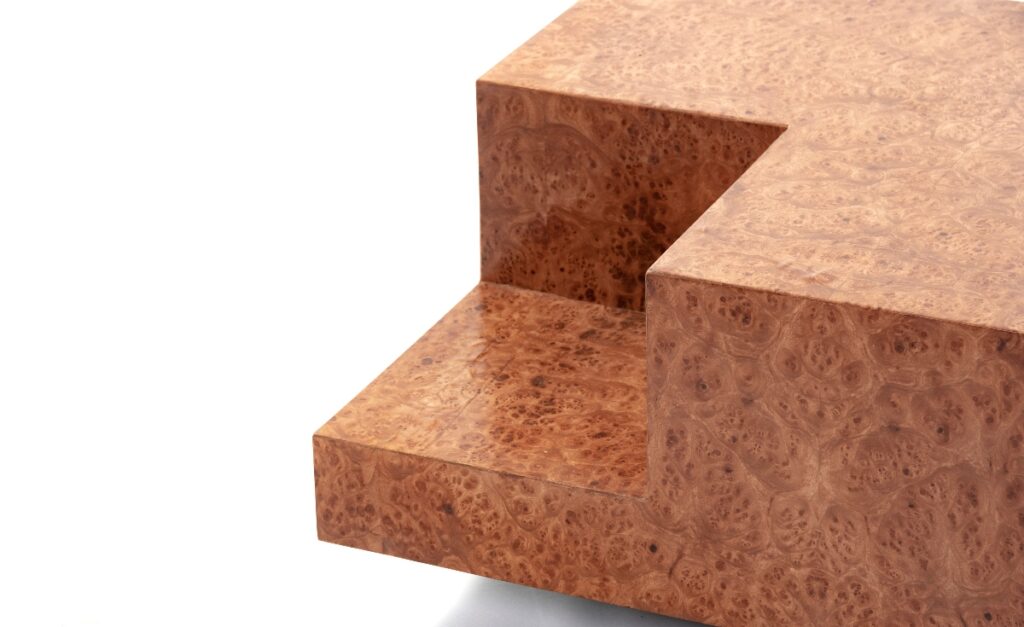A new year brings with it a fresh look at the trends that are emerging in the woodworking and furniture design world.
Trends come and go, but it’s interesting to take a look at them every so often and reflect on what this means for the furniture design world at large. They undoubtedly have an impact on what buyers are looking for, so, whether you incorporate them into your designs or not, it’s important to be aware of what is trending!
With that in mind, in this blog School Principal Tom Fraser dives into some of the woodworking and furniture design trends that are making waves in 2024.
Return to traditional techniques
One thing we’ve noticed amongst the furniture making community is a renewed interest in traditional woodworking techniques – such as carving, steam bending techniques, dovetail joinery and the mortise and tenon joint. These skills are time-tested and essential knowledge for any serious furniture maker.
But just because they are traditional doesn’t mean we can’t utilise them in a modern and exciting way – these techniques offer a world of possibility for a dedicated woodworker!
All of these traditional skills and methods are taught at the Chippendale School, either on the 30-Week Professional Course or specific courses, such as our Wood Bending course or Woodturning Weekend.
AI-Aided Design
Computer aided design (CAD) is nothing new in furniture design, but AI is slowly becoming more prevalent in the design world. While, in our view, nothing can top good old fashioned human creativity, AI technology can help refine the design process.
So, rather than having a fully ‘AI-designed’ piece of furniture, you could tap systems like Open AI for advice along the way. In this way, you can think of it as providing another tool for your toolbox, rather than replacing the original inspiration of a woodworker!
Burr wood furniture
Burr wood furniture is also set to rise in prominence this year. A striking alternative to regular grained wood, burr brings a beautiful texture to simple furniture designs and has become popular with interior designers such as Rose Uniacke, who sells furniture pieces made of Burr online. Formed by an imperfection causing a growth in a tree trunk, burr is a wonderful example of how beauty can arise from a natural ‘flaw’ in wood!
Chippendale graduate Daniel Smith exhibited his burr elm coffee table (pictured below) at the 2022 Graduate Show, providing a lovely example of how burr can be incorporated in furniture designs.

Upcycling
With costs rising across the board, upcycling as a trend isn’t going anywhere. Uncovering hidden gems and giving them a little bit of love is not only great from a sustainability perspective, but you end up with a truly unique piece.
Restoring antique furniture is something we place great value on at the School – our restoration specialist Clare Charleston runs a week-long Restoration Course where students can bring along a piece to be repaired and refinished.
Reclaimed Materials
Tying into the above point, we’re seeing more reclaimed materials being incorporated into furniture designs. Especially waste materials from other industries – like old scaffolding planks, old whiskey casks or even offcut wool from sheep shearing.
Incorporating unusual materials can lend a quirky character to a piece of furniture, and has the added benefit of saving something which would otherwise go to waste!
Maximalism
Move over minimalism – maximalism is back with a bang this year. From clothing and interior design to furniture, we are seeing this reflected across the design spectrum. House & Garden recently featured an article on why designers love this trend.
Increasingly popular are big, bold pieces with in-your-face colour and design elements. Of course, it’s all down to personal taste, but maximalism is undoubtedly trending, and we have seen this in some of our own students’ work, too.

Multi-Purpose Furniture
Living spaces are evolving, and so are the pieces they are furnished with. With square footage at a premium, especially in urban settings, furniture has to work hard to earn its floor space.
Extendable dining tables, space-saving desks, and innovative storage help maximise every inch of available space. Additionally, furniture needs to be flexible – for example, benches that change shape, or a mirror that doubles up as a cabinet!

Art Deco
Harking back to the 1920s and ‘30s, Art Deco is seeing a resurgence in popularity across interiors and furniture design. Think arches and geometric shapes, alongside incorporating glass and multi-tiered furniture design elements.
This highly-decorative style is evident across some of our own students’ work, albeit pared down in places. It’s always interesting to see what time periods our students draw inspiration from and make their own.
Wellbeing-led design
2024 is being hailed as the year of rest, with people being encouraged to slow down and prioritise their wellbeing. Your environment plays a huge role in how you feel, so it’s no surprise that this is being reflected in furniture design.
The trend embraces calming colours, biophilic elements, organic materials and plush fabrics, all inspiring a sense of relaxation. Furniture is vital in crafting a calming atmosphere, making your home a mood-boosting haven from the hustle and bustle of everyday life.
—
So, do you agree with our 2024 woodworking and furniture design trend predictions? While we don’t place a focus on being ‘trendy’ at the Chippendale School, it’s often enlightening to see what’s popular in the design world and assess how we can take inspiration from that.
It’s always important for professional furniture makers to keep in mind what their customers are looking for, and that’s why we place such a strong emphasis on business skills on our Professional Course.
Interesting in pursuing woodworking and fine furniture making as a career? Find out more about our 2024/25 Professional Course here, or check out our full range of courses here.
